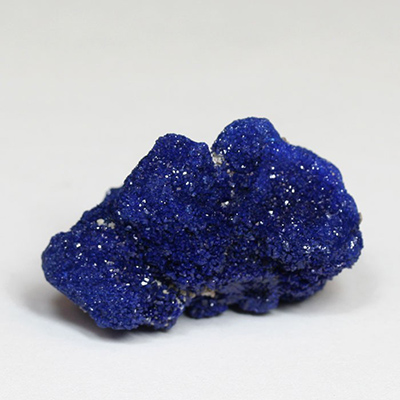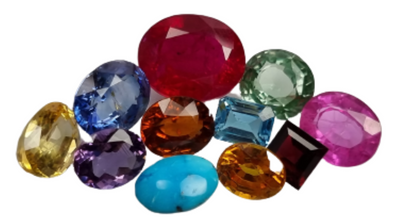
Azurite: Gemstone Information
An attractive blue opaque mineral (though superb small transparent crystals are found at Tsumeb) azurite is found in the oxidized zones of copper deposits and is very often intimately associated with malachite to the extent that the name azur malachite has been used. Azurite may alter to malachite over time. The composition is (Cu3(OH)2(CO3)2).Azurite is found as prismatic monoclinic crystals of varied habit, often in spherical radiating groups, and as such is found at Chessy, near Lyons in France.
It is common in botryoidal or stalagmitic groups and massive in veins with malachite. Some crystals become pseudomorphs of malachite after azurite. The SG of azurite lies between 3.77 and 3.89 and the principal RIs for the crystals are 1.73 and 1.84. The refraction is biaxial positive and the birefringence is 0.11. The hardness is 3.5–4 on Mohs’ scale. Azurite is easy to recognize. Green malachite and blue azurite in bands are cut as ‘azur-malachite’. Azurite is affected by acids and will indicate the presence of copper.
A fragment moistened with hydrochloric acid and introduced into the edge of a Bunsen flame will turn the flame blue. These are not appropriate tests for ornamental materials. Azurite is found at Chessy, France, Bannat, Romania, Bisbee and Morenci in Arizona in the USA. The mineral is also found in New South Wales and South Australia, and in Siberia. Magnificent though small translucent to transparent crystals from Tsumeb, Namibia, are the source of the very few faceted specimens. In 1971, samples of azurite recovered from an abandoned source at the Copper World Mine, between Barstow and Las Vegas, US, were found to be an unusually tough form of the mineral, mixed in some cases with malachite and other copper minerals. This soon became a popular lapidar material under the name ‘Royal Gem Azurite’.




